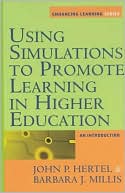Category Books
- Fiction Books & Literature
- Graphic Novels
- Horror
- Mystery & Crime
- Poetry
- Romance Books
- Science Fiction & Fantasy
- Thrillers
- Westerns
- Ages 0-2
- Ages 3-5
- Ages 6-8
- Ages 9-12
- Teens
- Children's Books
- African Americans
- Antiques & Collectibles
- Art, Architecture & Photography
- Bibles & Bible Studies
- Biography
- Business Books
- Christianity
- Computer Books & Technology Books
- Cookbooks, Food & Wine
- Crafts & Hobbies Books
- Education & Teaching
- Engineering
- Entertainment
- Foreign Languages
- Game Books
- Gay & Lesbian
- Health Books, Diet & Fitness Books
- History
- Home & Garden
- Humor Books
- Judaism & Judaica
- Law
- Medical Books
- New Age & Spirituality
- Nonfiction
- Parenting & Family
- Pets
- Philosophy
- Political Books & Current Events Books
- Psychology & Psychotherapy
- Reference
- Religion Books
- Science & Nature
- Self Improvement
- Sex & Relationships
- Social Sciences
- Sports & Adventure
- Study Guides & Test Prep
- Travel
- True Crime
- Weddings
- Women's Studies
Using Simulations to Promote Learning in Higher Education: An Introduction »

Authors: John Paul Hertel, Barbara Millis
ISBN-13: 9781579220525, ISBN-10: 1579220525
Format: Paperback
Publisher: Stylus Publishing
Date Published: March 2002
Edition: (Non-applicable)
Author Biography: John Paul Hertel
John Paul Hertel is Associate Professor of Law at the United States Air Force Academy (USAFA), Colorado. He frequently conducts workshops at professional conferences and campuses around the country.
Barbara Millis is Director of the Teaching and Learning Center, University of Texas at San Antonio, having previously served as Director of faculty development at the U.S. Air Force Academy. Prior to that, she worked in faculty development at the University of Maryland University College. She frequently conducts workshops at professional conferences and campuses around the country.
Book Synopsis
"Not only did I learn more substantive law than in any other course I've taken, but I learned why I needed to learn all those things." Alumnus of a legal simulation courseSimulations create and use a complete environment within which students can interact to apply theory and practice skills to real-world issues related to their discipline. Simulations constitute a powerful tool for learning. They allow teachers simultaneously to integrate multiple teaching objectives in a single process. They motivate students, provide opportunities for active participation to promote deep learning, develop interactive and communication skills, and link knowledge and theory to application. This book provides an introduction to the use of simulations - from creating simple scenarios that can be completed in a single class period, to extended, complex simulations that may encompass a semester's curriculum. Assuming no prior experience in their use, the authors provide a recipe approach to selecting and designing scenarios for all sizes of class; offer guidance on creating simulated environments to meet learning objectives; and practical advice on managing the process in the classroom through to the crucial processes of debriefing and assessment. The detailed concluding description of how to plan and manage a complex simulation — complete with its sample scenario and examples of documentation - provides a rich demonstration of the process. This book will appeal to anyone, in virtually any field of study, looking for effective ways to bridge the gap between academic learning and discipline-specific practice.
Constance Staley
Providing an extensive review of convincing literature, Hertel and Millis give us a careful, step-by-step, how-to book — from the creative aspects of designing simulations through the challenging aspects of assessing students performance. Simply put, reading Using Simulations to Promote Learning in Higher Education will change the way you teach. Bravo!
Table of Contents
| Preface | ||
| 1 | Why Simulations Further Educational Goals | 1 |
| 2 | What is an Education Simulation? | 15 |
| 3 | Designing an Education Simulation | 29 |
| 4 | Managing an Education Simulation | 45 |
| 5 | Debriefing an Education Simulation | 59 |
| 6 | Responsible Assessment | 73 |
| 7 | An Extended Simulation | 91 |
| App. A | Scenario Summary: SCIC/Inglewood v. City of L.A. | 143 |
| App. B | Single-Synopsis Scenario: Pirates Landing | 145 |
| App. C | Selective and Sequenced Scenario: SCIC/Inglewood v. City of Los Angeles Scenario Guide and Plan | 148 |
| App. D | The Simulation News | 161 |
| App. E | Simulation Office Memorandum: Logs | 164 |
| App. F | Simulation Office Memorandum: General Office Procedures | 166 |
| App. G | Simulation Office Memorandum: Simulation Center | 169 |
| References | 171 | |
| Index | 179 |
Subjects
 Educational Levels & Settings
Educational Levels & Settings  College Education
College EducationEducation & Teaching
 Learning
Learning  Experiential learning
Experiential learningNonfiction
 All Nonfiction
All Nonfiction  Education - General & Miscellaneous
Education - General & Miscellaneous
